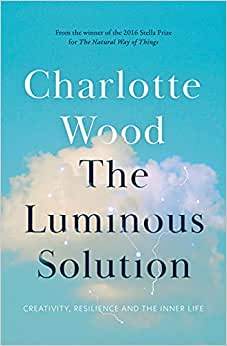Reader: beware. This is a big ol’ whinge. I’m around 27,000 words which is half way, or maybe even a bit more, through a new novel. Up until the last thousand words, it’s been – if not exactly a breeze; it is work, after all – fun to write. Flowing. I’ve known where I’m going and it’s been a straight path to get there. A big sigh of relief that I’ve got my groove back.
And now? Well, I keep stuttering and stumbling. Stopping and starting. Feeling stuck. Like a little boat that’s been bobbing merrily down a river but now is snagged, high and dry, not going anywhere.
I know my destination (as in, the end of the story) but stranded, high and dry, I’m obviously struggling with how to get there. This is what I could call a ‘mid-book slump’. What was begun with such high spirits now feels dreary and dull. Where’s the bounce? The fun? If I can’t find them, how will the reader?
Comparing the two states – flow, and this – I’d say it’s like pleasure and pain. And though I know that the pain will stop, I don’t quite believe it.
So what do I do? There are a few choices.
1. Just keep writing. Slog along. Plow through. No matter how dreary and wretched it seems, keep going. Don’t judge, just do it. Words on paper; get started, keep going and don’t revise. Set the timer at one hour. Do it again. Again. Again.
2. Radical, this one. Don’t care. It’s like sketching. Don’t even form proper sentences; words and fragments of sentences are OK. Sketch out action, dialogue, plot lines. I’m not someone who draws or diagrams, but I guess if I was, I’d do this now. Set the timer. God, this feels hard…
3. Re-read. Start at the very beginning. Re-read and revise as I go, trying to immerse myself again in what I loved enough to start the project. I’ll often realise with surprise that it’s OK. A first draft, and rough, but OK. I can fall in love with the story again. I can hear ‘the voice’… and get back on the writing horse.
4. Take a break. A week is good. Two is better. Don’t look at it, think about it, worry or fret. Come back to it refreshed and ready to go.
5. Wait it out. Patience is a virtue, so they say.
 I am reading Charlotte Wood’s The Luminous Solution. I like finding out about how other writers work, how they see their own process, their thoughts about the art and craft of making stuff up, their thoughts about creativity and literature and art. It’s the right book at the right time; it’s helping me keep my courage up. Courage? I feel like giving up at times. It’s just a silly kid’s book, says a negative voice inside my head. It’s nothing; there are too many books in the world anyway, and it won’t be missed. Why do you bother? Why do you care so much?
I am reading Charlotte Wood’s The Luminous Solution. I like finding out about how other writers work, how they see their own process, their thoughts about the art and craft of making stuff up, their thoughts about creativity and literature and art. It’s the right book at the right time; it’s helping me keep my courage up. Courage? I feel like giving up at times. It’s just a silly kid’s book, says a negative voice inside my head. It’s nothing; there are too many books in the world anyway, and it won’t be missed. Why do you bother? Why do you care so much?
In an essay called The Grumpy Struggle (yes!) Wood writes:
In the midst of this gloom, to create is an act of enlargement, of affirmation. It lights a candle in the darkness, offering solace, illumination – maybe even the possibility of transformation – not just for the maker but for the reader or viewer, which is to say all of us. Art urges us to imagine and inhabit lives other than our own, to be more thoughtful, to feel more deeply, to challenge what we think we already know. Art declares that we contain multitudes, that more than one thing can be true at once. And it gives us a breathing space, in which we can listen more than talk, where we can attentively question our own beliefs. It gives us a place in this chaotic world in which to find the sort of meaning that only arises out of the stillness, deep within our quiet selves.
If I can think that even though it’s only a silly kid’s book, it is also a candle – a possible candle – for some kid, I can wait it out. The water will rise, the boat will float, and my little floating craft will start bobbing along the river again.
